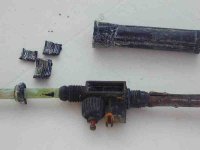Henry Bockman
Maryland Pressure Washing
From all that I have seen or run acrossed I have not been able to find the one compound I'm looking for.
Hopefully someone out there knows of something like this.
What I'm looking for is a chemical that I can downstream or apply with a shurflow like sprayer, onto a deck before I clean it as a pre-treat agent.
This should be a good cleaning agent/brightner that does not require another chemical to nuetrilize.
I would like to find something that can either be nutrilized by water, or not at all before the deck is washed, dryed and then sealed with what ever sealer I want to use.
Has anyone found a chemical like this and if so where and what's it called?
If there isnt anything like this why doesnt someone make it?
Hopefully someone out there knows of something like this.
What I'm looking for is a chemical that I can downstream or apply with a shurflow like sprayer, onto a deck before I clean it as a pre-treat agent.
This should be a good cleaning agent/brightner that does not require another chemical to nuetrilize.
I would like to find something that can either be nutrilized by water, or not at all before the deck is washed, dryed and then sealed with what ever sealer I want to use.
Has anyone found a chemical like this and if so where and what's it called?
If there isnt anything like this why doesnt someone make it?


